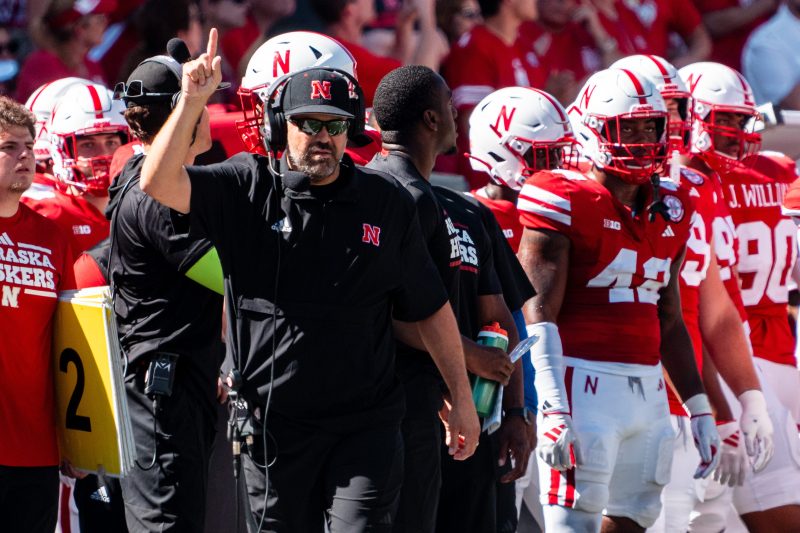
It’s time to get rid of college football spring practice as we know it
The causation is clear and inarguable. We don’t need a football coach to explain that nothing happens in a vacuum.
If illegal tampering is rampant and unchecked in college football, why have a spring game and invite coaches from every school to view your roster in a game setting and decide which player to throw money at?
So Nebraska coach Matt Rhule says he may cancel his program’s widely popular (and populated) spring game to avoid it. And because he opened the door to this specific problem, it has left an opportunity to debate a larger issue facing college football ― one with tentacles reaching all the way to the NFL’s inexplicable free development system.
The stupidity of spring practice.
Think about this concept: Ohio State just completed five months of training camp and played 16 games to win the national championship, and spring practice will begin in less than two months.
That’s 15 practices, including a spring game, a little more than eight weeks after a grueling 20-week run of the most physically damaging sport on the planet.
In what world is this smart?
REPORT CARD: College football season grades for all 134 teams
LOOKING AHEAD: Our way-too-early college football Top 25 for 2025
With so much empirical data underscoring the danger of the sport, with the increased number of head injuries and significant ligament injuries, why would any coach subject his team to more hitting in practice — so quickly after a full season?
It will be four years in July since the financial dynamics of college football drastically changed, when NIL deals were allowed and free player movement was introduced and month after month, the sport drew closer and closer to a mini version of the NFL.
Why run away from chain of causation now? Why, after players can earn millions before taking a snap of college football, after universities are expanding the postseason and adding games and preparing to ignite a straight pay for play system on July 1, would college football hold so tightly to archaic player development ideals that no longer fit?
Player development is critical in the offseason, but it’s not being efficiently (or smartly) executed. It takes an act of god for universities to get on the same page for anything, and even then, you’ll get one kook floating the idea of players completing two seasons in nine months during a pandemic (we’ll never forget you, Kevin Warren).
This isn’t that difficult to comprehend. Be smart about practice and hitting, and the timing and length of it.
Player development in the NFL offseason is strict and regimented, with specific dates and times for teams to interact with players. It’s very clear when and where hitting is allowed, and it’s not often. Especially in the offseason.
The NFL has 10 days of OTAs (organized training activities), where zero hitting is allowed and participation isn’t mandatory. It also has 2-3 days of “mini-camp” — a practice setup that essentially is for rookies and young players who don’t get on the field.
In other words, those two points of development are college football’s version of spring practice.
There’s undeniable value in spring practice at the college level, especially since midterm enrollees have become the norm instead of the outlier. High school players are graduating early to get an immediate start on college football.
There’s a significant difference in the speed and physicality at the college level, and the 15 practices are a bridge to the real development that begins in fall camp. So have OTAs for freshmen and redshirt freshmen in the early spring, a group of practices with no live, 11-on-11 team hitting.
Then return in pre-summer (early May) with a mini-camp, where the entire roster is available for a limited number of days. The preseason then begins in late July with training camp, where a specific number of days are set aside for 11-on-11 team hitting.
Just like the NFL, coaches have the ability to excuse players from OTAs or mini-camp, depending on injury or the need to get younger players more time. But that move to an NFL offseason model opens another door of causation that must be addressed.
Again, nothing happens in a vacuum.
Spring games are money-makers for universities, an opportunity to open the gates and satiate a football-mad fanbase with hope of what could be. That hope once translated to season tickets and apparel, and now is also used to replenish collectives.
The worst part of this current process, the absolute worst part, is the NFL is the largest beneficiary of it all. College teams develop players for the NFL, and the NFL pays nothing.
The NFL, the most successful professional sports league in the world, doesn’t pay for player development. The NFL has a $110 billion – billion – media rights agreement, and not a penny goes to arguably the most important piece of its success.
Want to prevent teams from poaching players after watching spring games? Simple. Move to an NFL offseason schedule, and make up for lost revenue by negotiating a talent fee with the NFL.
No talent fee, no scouts and personnel people in football buildings at NCAA schools. Not at practice, not at games, not during spring ball. No access to game and practice tape, no access to coaches.
Nothing.
When the NFL draft begins, those same NFL personnel will be as blind as Joe Sixpack while heading into their critical player procurement process.
For too long, college football has played dutiful soldier for the NFL. Not anymore. It may be a new, NFL-based world, but that doesn’t mean someone isn’t paying for it.
Be it the end of spring practice and games, or the implementation of a new offseason calendar.
Nothing happens in a vacuum.
Matt Hayes is the senior national college football writer for USA TODAY Sports Network. Follow him on X at @MattHayesCFB.
